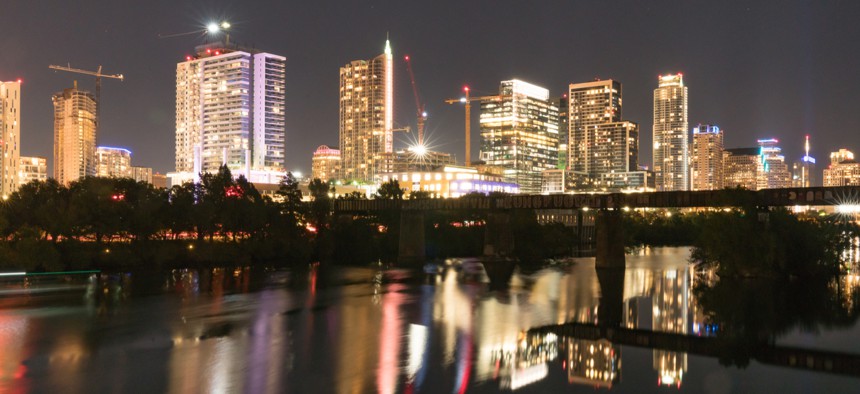What Is Known Thus Far About the Austin Serial Bombings

Austin at night. Shutterstock
Texas' capital remains on edge.
There have been four mysterious explosions in Austin, Texas this month, and not much beyond the human toll is known for sure. Police say they are investigating the incidents that have killed two people and injured four others as connected.
“We are clearly dealing with a serial bomber,” Austin Police Chief Brian Manley told reporters last night (March 18). Still, he could not say whether the explosions constitute acts of terror: “We will have to determine if we see a specific ideology behind this.”
The incidents have the state capital of about 950,000 residents fearful of what might come next, and in a city with a fraught history of racial segregation, some have wondered aloud about whether with the attacks—the victims in the first three incidents were black and Latino–have a racial motive. The two black victims both belonged to prominent African-American families.
“What we know for certain is: We have three victims that are victims of color, and we have three package bombs that have exploded on the east side of Austin,” Manley has said, noting that the east of Austin is home to a large component of minority population.
However, the victims and the site of the latest attack are not consistent with that initial pattern: The victims are two white men in their 20s, and the explosion was in the Travis Country neighborhood in western Austin, an area with predominantly white population.
The Austin police department and Texas governor Greg Abbott have offered a $115,000 reward for information on the incidents.
The first incident on March 2 and the following two on March 12 involved bombs stuffed inside packages delivered to homes. They killed two people and injured two more. In the fourth one last night, the two victims who were walking on the side of the road. Police say they “received significant injuries” that were not life threatening. (The latest explosion is thought to have been triggered by a tripwire, detonating in a more sophisticated manner than the packages left at the homes.)
On March 17, a bomb threat led to the cancelation of a concert by hip-hop band The Roots, an event that was to mark the close of Austin’s SXSW music, entertainment and tech festival. Trevor Weldon Ingram, 26, as been changed with sending the threat.
Travis Country residents have been warned to stay indoors while the investigation in the area was under way, and extended recommendations of general caution to city residents regarding suspect packages.
Police say they do not know whether the victims in any of the incidents were the intended targets.
Why the Police Suspect a Connection
While it remains uncertain whether the explosions are connected, police say they are operating under the assumption that they are.
Just before the fourth explosion, officials issued a plea to the person or persons responsible. “We hope this person or persons is watching and will reach out to us before anyone else is injured or anyone else is killed,” Manley said yesterday afternoon, while announcing the $115,000 reward, “We assure you, we are listening and we want to understand what brought you to this point, and we want to listen to you, so please call us.”
The bomber’s response may have been the bomb that went off later that evening.
Briefing reporters today, Manley said investigators have “seen similarities in the device that exploded here last night and the other three devices that have exploded in Austin.”
How Unusual Are These Types of Bombings?
According to the U.S. Bomb Data Center, a unit of the federal Bureau of Alcohol, Tobacco, Firearms and Explosives, there were at least 439 bombings (pdf) in the U.S. in 2016, the year with the most recent data available. Of these, only three were hand-placed boxes and three other were in hand-placed bags. So the four explosions in Austin of similarly placed packages or bags—last night’s explosive is believed to have been contained in a backpack—are quite unusual.
Texas, despite being the second-most populous state in the country, it is not one of the top five for explosions: The ranking is led by California, followed by Florida, Maryland, New York, and Washington.
Annalisa Merelli writes for Quartz, where this article was originally published.
NEXT STORY: What Trump-era Economic Policies Mean to the Mayor of U.S. Steel’s Hometown






